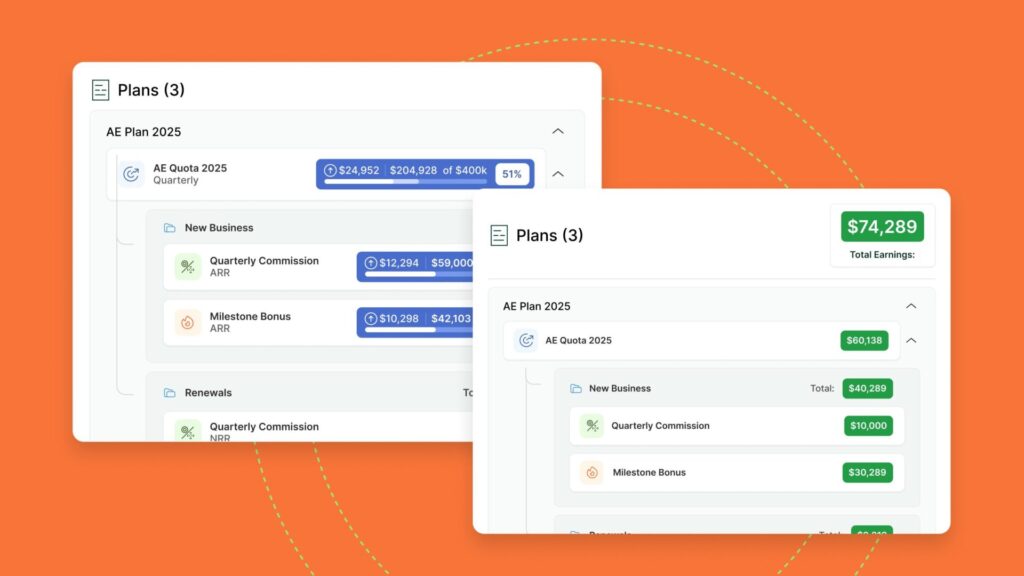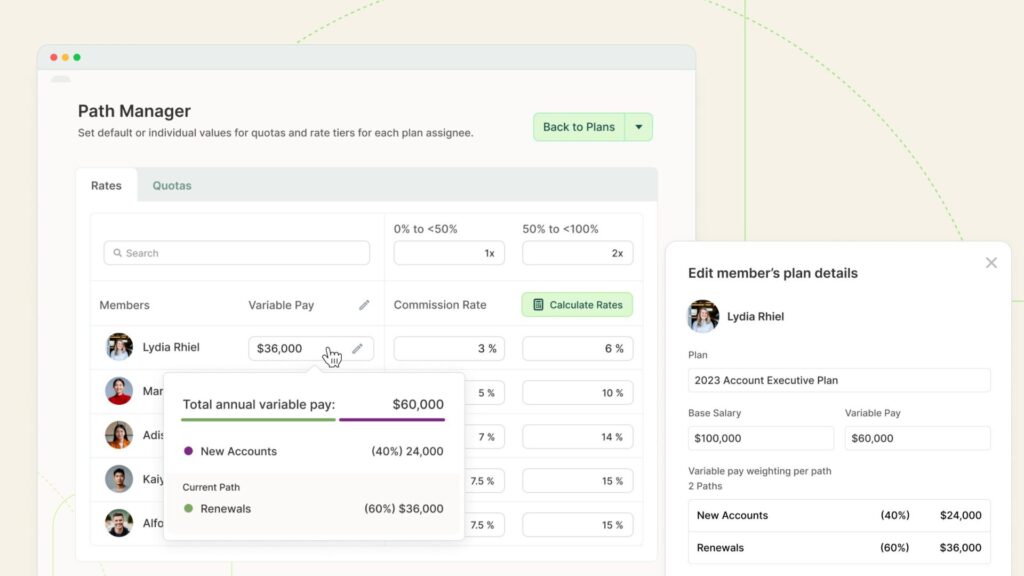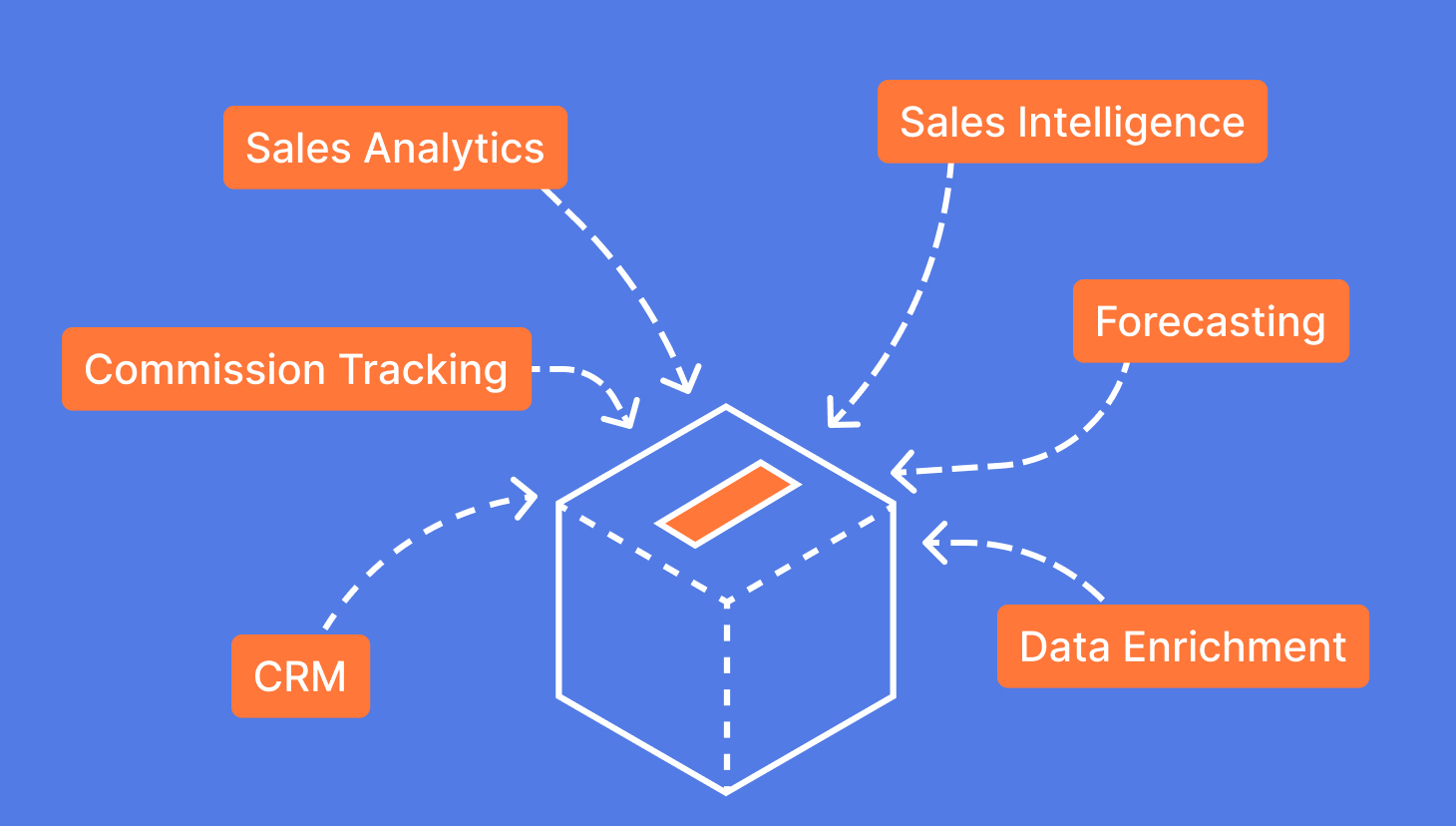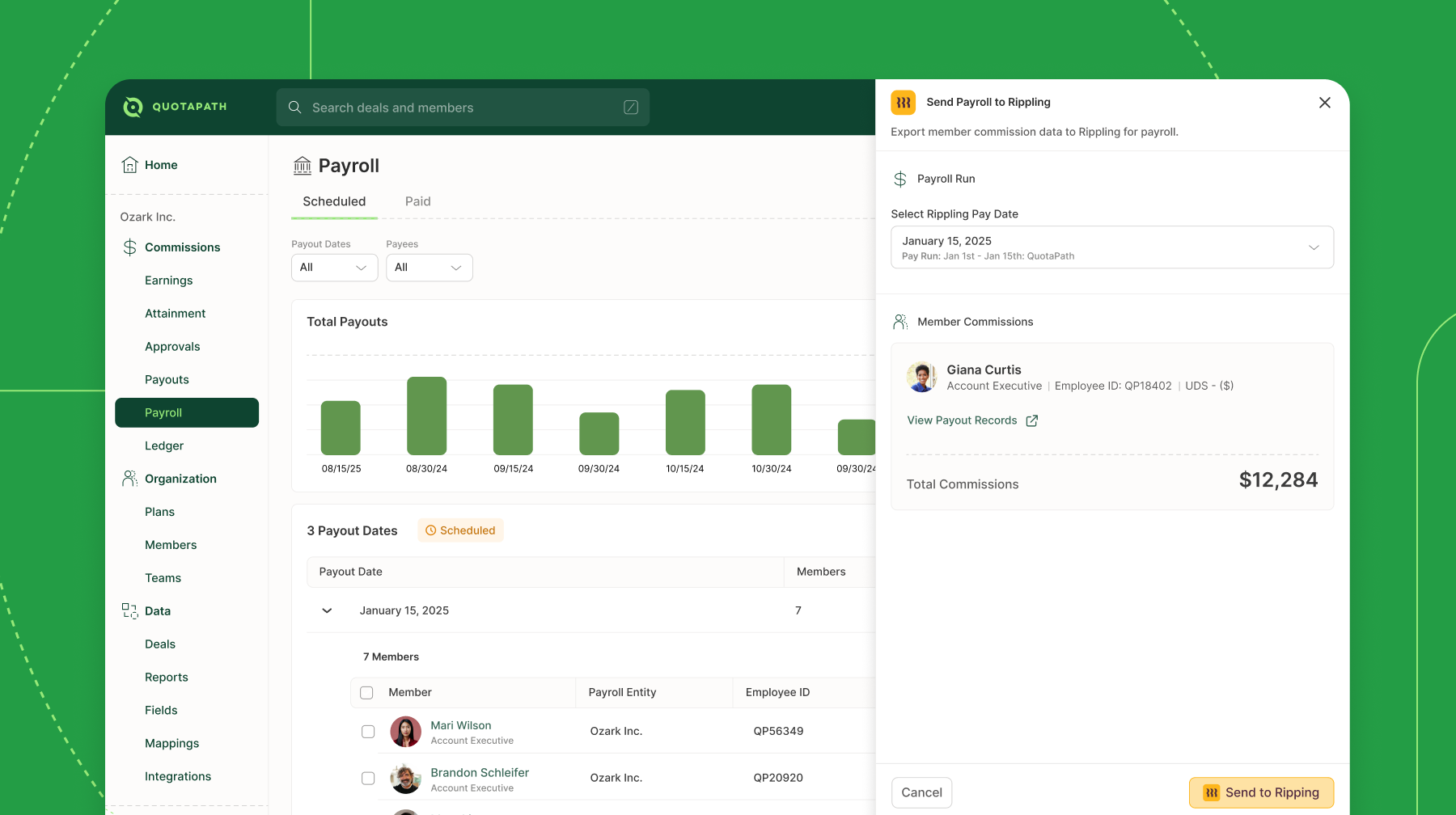According to 82% of sales professionals, sales operations (SalesOps) play a critical role in business growth and are the backbone of a high-performing sales team. This team supports and enables frontline sales teams to sell more efficiently and effectively.
SalesOps provides strategic direction, improves cross-departmental collaboration and communication, reduces sales process friction, and manages tools, processes, and data to achieve its goals.
With the right tools, sales ops can streamline processes, improve forecasting, and drive predictable revenue growth. Companies that invest in sales operations tools see:
- Higher quota attainment rates
- Faster deal cycles
- More accurate forecasting
In this blog, we explore comprehensive sales operations tools and strategies. This guide covers key features, implementation tips, and the transition to RevOps.

Recommended Reading
SalesOps vs. RevOps: An interview with RevPal Founder Christian Freese
Take Me to BlogWhat Is Sales Operations
Sales operations, SalesOps, is the strategic function that supports and enhances a sales team’s efficiency. It bridges sales, finance, and RevOps, ensuring sales teams are equipped with the right processes, data, and tools to succeed.
Sales operations strive to increase revenue efficiency by optimizing workflows, automating tasks, and improving sales performance tracking. SalesOps enables sales teams to focus more on selling and less on administrative burdens, ultimately contributing to the overall growth and success of the business.
Key Responsibilities of Sales Operations
As far as responsibilities, SalesOps handles the following critical functions that support a high-performing sales organization:
Process Optimization – Standardizing and improving sales workflows to increase efficiency.
Sales Data & Analytics – Collecting, analyzing, and leveraging data for better decision-making.
Technology & Automation – Implementing and managing CRMs, forecasting tools, and automation platforms.
Compensation & Commission Tracking – Ensuring accurate commission payments and motivating reps with performance-based incentives.
Sales Strategy & Planning – Aligning sales efforts with company goals through quota setting, pipeline management, and forecasting.
The Evolution of Sales Operations
Traditionally, sales operations focused on data entry, reporting, and administrative tasks. However, the role has evolved. Today, modern Sales Ops teams act as strategic revenue enablers, leveraging automation, AI, and real-time analytics to drive predictable revenue growth.
Sales operations is increasingly merging with Revenue Operations (RevOps), which integrates sales, marketing, and customer success into a unified revenue strategy. This evolution reflects a broader shift toward cross-functional alignment and data-driven decision-making in today’s competitive business landscape.
Streamline commissions for your RevOps, Finance, and Sales teams
Design, track, and manage variable incentives with QuotaPath. Give your RevOps, finance, and sales teams transparency into sales compensation.
Talk to SalesKey Features To Look For In Sales Operations Tools
Now, for the tools! Sales operations software optimizes day-to-day sales functions. When selecting the best tools for your organization, consider these crucial features.
| Feature | Why It Matters | What to Look For |
| Business Goals | Sales operations tools should align with your revenue and efficiency objectives, helping teams hit quotas, close deals faster, and improve forecasting accuracy. | – Customizable dashboards and reporting – Goal tracking and performance metrics – AI-driven forecasting for revenue planning |
| Ease of Automation | Automating manual processes saves time, reduces errors, and ensures consistency in sales workflows. | – Workflow automation for approvals, commissions, and reporting – AI-based recommendations for deal prioritization – Integration with CRMs and finance tools for seamless data syncing |
| Ease of Adoption | Tools should be user-friendly and intuitive to ensure high adoption rates across sales, finance, and operations teams. | – Low learning curve with minimal training required – Clean, intuitive user interface (UI) for easy navigation – Built-in guided onboarding and support resources |
| Ease of SalesTech Connections | Sales ops tools should integrate with existing sales technology stacks to avoid data silos and manual workarounds. | – Native integrations with CRMs (Salesforce, HubSpot, etc.) – API support for custom connections – Ability to sync data across forecasting, commission tracking, and analytics platforms |
| Security Compliance | Protecting sensitive sales and customer data is crucial for maintaining compliance and avoiding legal risks. | – Role-based access control (RBAC) for user permissions – Compliance with GDPR, SOC 2, and other security standards – Secure data encryption and audit logging |

Top Sales Operations Software
Sales operations leverage various tools to facilitate their multifaceted role efficiently. We’ve curated some popular options in key software categories commonly used by these professionals to aid your tool selection.
CRM Software
Customer Relationship Management (CRM) software helps businesses manage, track, and document their interactions with current and potential customers. This tool organizes, automates, and synchronizes sales, marketing, customer service, and support activities.
Salesforce
Salesforce helps companies manage customer relationships, communication, conversion, lead tracking, and measure success through reporting.
HubSpot
HubSpot unites marketing, sales, and customer service on a single platform, enabling them to focus on the customer.
Zoho CRM
Zoho CRM helps businesses manage sales, marketing, and customer support activities in a single, unified platform.
Pipedrive
Pipedrive is designed to help businesses close more deals by enabling sales teams to focus on managing leads, tracking sales activities, and automating sales processes.
Forecasting Software
Sales forecasting software enables the sales operations team to accurately predict a sales team’s performance in the upcoming months by analyzing past trends and current performance indicators. These insights help allocate resources, detect weaknesses, improve budget management, and minimize risks.
Avercast
Avercast’s Sales forecasting software uses previous sales data plus current salesperson data to make sales projections. The software enables sales ops to create more realistic sales goals and adjust forecasts based on sales rep feedback.
OnPlan
OnPlan provides budgeting and forecasting capabilities, enabling sales operations to create “what-if” scenarios, track milestones, and gain insights into past performance through premade dashboards.
Clari
Clari helps businesses create accurate forecasts by analyzing historical data and identifying patterns, reducing guesswork, and improving revenue predictability.
Anaplan
Anaplan is a business planning, forecasting, and performance management software platform that connects financial, strategic, and operational planning in real-time, enabling better decision-making.
Sales Automation Software
Sales automation tools standardize and automate repetitive manual tasks like emails, scheduling, and data entry, enabling reps to focus on sales activities to advance and close deals. Recent research by McKinsey indicates that leveraging automation can help boost sales by up to 20 percent.
Bardeen
Bardeen helps automate repetitive tasks and streamline workflows across various apps and websites by connecting different applications with a few clicks, saving time and effort.
Zapier
Zapier connects different apps to automate workflows without needing to write code.
Boomi
Boomi helps businesses connect applications, data, and devices. Its user-friendly, low-code platform enables data integration, process automation, and API management.
Apollo
Apollo automates sales lead generation, contact database management, email outreach, and engagement to streamline sales processes and boost efficiency.
Sales Intelligence & Data Enrichment Software
Now let’s talk sales intelligence software, which equips sales ops teams with market insights, competitor analysis, and lead scoring, eliminating guesswork and facilitating data-driven decision-making.
ZoomInfo
ZoomInfo provides businesses with company and contact information, as well as tools for outreach and automation, to improve their sales and marketing efforts.
Sales Navigator
LinkedIn Sales Navigator helps sales professionals find, qualify, and engage with leads more effectively, offering advanced search capabilities, lead recommendations, and CRM integration.
Cognism
Cognism provides verified emails, phone numbers, and intent data to help businesses connect with their target customers.
LeadFeeder
LeadFeeder identifies and tracks website visitors, providing buyer intent data and enabling data-driven lead generation and sales decision-making.
DiscoverOrg
DiscoverOrg provides contact data and sales intelligence, enabling sales operations to identify key decision-makers, manage and enrich data, and improve sales efficiency and pipeline velocity.
Infer
Infer offers predictive lead scoring to prioritize high-potential leads and improve sales cycle efficiency.
MadKudu
MadKudu aggregates data, prioritizes leads, and provides context for outreach, helping sales teams focus on high-value prospects and improve deal velocity.
Try QuotaPath for free
Try the most collaborative solution to manage, track and payout variable compensation. Calculate commissions and pay your team accurately, and on time.
Start TrialCommission Tracking Software
Commission tracking software automates calculating, managing, and tracking sales commissions, bonuses, and incentives, streamlining processes and ensuring accurate payouts to sales teams.
QuotaPath
QuotaPath provides real-time data syncs, personalized dashboards, and automated commissions to enhance earnings transparency and sales performance.
Qobra
Qobra automates commission calculation, validation, and sharing, reducing errors and boosting sales motivation with real-time visibility to enhance sales performance.
Xactly
Xactly automates compensation design and management to align seller behavior with revenue goals, reducing administrative time, improving quota attainment, and increasing payout accuracy.
Performio
Performio is used to automate and manage sales commission calculations. It allows businesses to design compensation plans and track sales performance.
Spiff
Spiff simplifies incentive compensation management, builds trust, motivates sales teams, increases performance and earnings visibility, and drives top-line growth.
CaptivateIQ
CaptivateIQ blends the ease of spreadsheets with advanced automation tools, allowing companies to efficiently design, calculate, and manage complex incentive compensation programs.
Sales Analytics Software
Sales analytics software helps businesses analyze sales data, identify trends, and make data-driven decisions to improve sales performance and increase revenue. It provides insights into sales activities, customer behavior, and market dynamics, enabling businesses to optimize their sales strategies.
Tableau
Tableau helps businesses make sense of data to solve problems. It’s used for business intelligence, data visualization, and analytics.
Salesloft
Salesloft Analytics centralizes reporting, providing comprehensive insights that enable data-driven decisions.
Parabola
Parabola streamlines data consolidation, reporting, and analysis, facilitating data-driven decision-making.

Best Practices for Implementing Sales Operations Tools
All that is great, but remember that selecting the best tools means nothing if they aren’t properly implemented. Take a look these tips below to get the most out of your chosen sales operations software.
Sales Operations Org Structure
Start with org. structure. A well-defined sales operations org structure is essential for clarity, collaboration, and alignment with broader revenue goals.
Define roles and responsibilities:
– Clarify the distinction between RevOps, Sales Ops, and Finance teams.
– Assign ownership for data management, reporting, automation, and tool oversight.
Ensure alignment with revenue strategy:
– Structure the team to support scalability, forecasting, and efficiency.
– Connect sales leadership, finance, and operations for shared accountability.
Leverage sales ops to optimize processes:
– Improve pipeline visibility, compensation accuracy, and quota attainment tracking.
– Standardize sales workflows and data hygiene across all tools.
Determine Best Practices
Secondly, strong operational standards must be established to ensure that the tools support business outcomes effectively.
Establish clear workflows and processes
– Define how data flows between tools (CRM, commission tracking, forecasting).
– Ensure that automation supports key sales objectives.
Align tools with business goals
– Identify which metrics matter most and how tools should measure them.
– Set clear expectations for tool adoption and usage across teams.
Regularly evaluate and optimize
– Conduct quarterly audits to measure tool effectiveness.
– Gather feedback from sales reps, leadership, and finance teams.
Encourage Collaboration With Sales Leadership
Close collaboration with sales leadership helps ensure sales operations tools directly support frontline success.
Sales Ops as a strategic partner
– Work with sales leaders to define quotas, incentives, and compensation structures.
– Support deal strategy and pipeline forecasting with real-time insights.
Ensure sales leaders understand tool’s impact
– Provide visibility into how automation reduces administrative work.
– Show how tools optimize performance tracking and revenue forecasting.
Create a culture of transparency and accountability
– Ensure reps can see their earnings, goals, and progress in real-time.
– Implement multi-level approvals for commission accuracy.
Build A Skill Development Plan
Next, training is essential to maximize the value of tools and empower teams to use them effectively.
Train sales teams on best practices for using tools
– Offer ongoing education on CRM, automation, forecasting, and compensation management.
– Develop role-based training modules for different team functions.
Empower teams to use data effectively
– Teach reps how to interpret dashboards and optimize sales strategies.
– Train RevOps and Finance teams on commission tracking and quota modeling.
Foster a learning-driven culture
– Host monthly sales operations reviews to discuss what’s working and what’s not.
– Encourage sales ops to improve processes continuously based on feedback.
Roll It Out In Phases, Don’t Go Big Bang
Additionally, we recommend rolling out new solutions gradually. This ensures smoother adoption, fewer disruptions, and faster iterations based on feedback.
Start with a pilot group
– Test the new sales ops tool with a small team first.
– Gather initial feedback before full rollout.
Phase implementation across departments
– Introduce tools gradually to sales, finance, and RevOps teams.
– Ensure each group understands their role in the process.
Refine based on user adoption and impact
– Monitor early performance indicators to adjust workflows.
– Provide support resources to ease adoption.
Cross-Team Collaboration
Lastly, collaboration between sales, finance, and RevOps is critical to ensure tools deliver unified insights and scalable growth.
Unify sales, finance, and RevOps through shared insights
– Create centralized dashboards for real-time data sharing.
– Ensure all teams have access to the same performance metrics.
Encourage open communication between departments
– Hold regular alignment meetings to review tool adoption and impact.
– Foster a culture of continuous improvement based on data insights.
Optimize workflows for efficiency and transparency
– Automate commission tracking, approvals, and reporting to reduce bottlenecks.
– Use feedback loops to refine processes and improve tool efficiency.
Streamline commissions for your RevOps, Finance, and Sales teams
Design, track, and manage variable incentives with QuotaPath. Give your RevOps, finance, and sales teams transparency into sales compensation.
Talk to SalesThe Future Of Sale Operations; Revops
We’ll end this long piece with some thoughts on the transition from SalesOps to RevOps, which continues to accelerate. RevOps topped LinkedIn’s Jobs on the Rise list in 2023, with nearly 60% of companies having established RevOps functions in the last two years. Forrester found that businesses that align the people, process, and technology in the demand engine, as they do in RevOps, experience 36% more revenue growth and up to 28% more profitability.
How are SalesOps professionals making the transition to RevOps? According to Christian Freese of RevPal, “Spend the time you’re in sales ops to learn and build those relationships internally with your current company or join RevOps Slack groups to get some mentors.
Start understanding the full funnel view of a company, from the inception of a lead to an opportunity, a deal, the handover to CS, and through to an upsell or cross-sell. Understand the responsibilities of every GTM function. You don’t have to be an expert in each one because a good RevOps person, in my opinion, is a generalist.
They know a little bit about everything and can lead a team that can build out what you’re planning.
Also, get familiar with what OKRs are and how companies plan their OKRs. Then, learn how to align all the teams to drive that one OKR metric that drives the company forward.”
So there you have it. Now, you should feel fully ready to build that salesops software stack and prepare for a move toward RevOps!
FAQs
What is the difference between revenue operations and sales operations?
While both Sales Operations and Revenue Operations (RevOps) aim to improve revenue, RevOps takes a broader, holistic approach. It focuses on aligning all revenue-generating teams (sales, marketing, customer success) to optimize the entire customer journey. In contrast, Sales Operations focuses on streamlining the sales process and enhancing sales team productivity.
Which sales operations tool has the most features?
For sales operations, Salesforce Sales Cloud is often considered a leader in terms of feature richness, offering a comprehensive suite of tools for managing customer interactions, streamlining sales processes, and providing analytics.
How can sales operations tools improve sales team productivity?
Sales operations tools improve sales team productivity by automating tasks, streamlining workflows, providing data insights, and enabling better resource allocation, ultimately allowing sales teams to focus on closing deals and improving overall performance.
What skills are essential for sales operations professionals?
Essential skills for sales operations professionals include strong analytical and data analysis abilities, CRM proficiency, project management skills, communication, and collaboration with sales teams and other departments.



